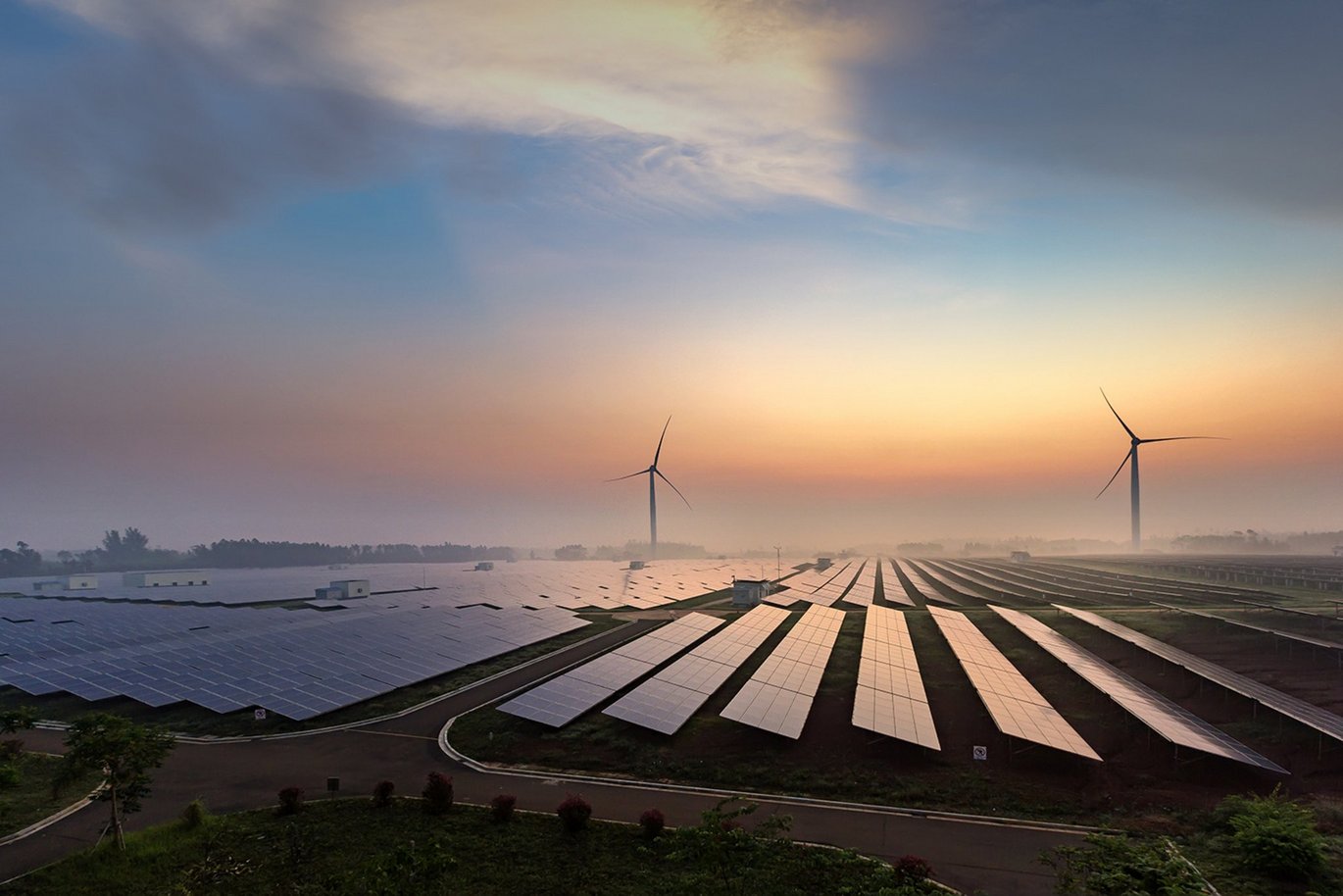Multiscale material design should help flywheels to spin faster and store unprecedented amounts of energy
In the future, surplus power from wind turbines and solar cells will be stored in huge flywheels made of novel composite material rotating at lightning speeds. This is the aim of a new project, and Danish companies are preparing to put the invention into production.

The whole world is waiting for new solutions to make it possible to store excess energy production from wind farms and photovoltaic systems, for example. One of the major hurdles of the green transition is to find a way to avoid sending electricity into thin air when it is windy or sunny, and to ensure access to a renewable and stable supply when there is no wind or sun.
A group of Danish researchers and companies is hoping to overcome this hurdle by designing a new type of flywheel to complement traditional electrochemical batteries and store large amounts of electricity as kinetic energy.
"Our clear expectation is that our material design and design approach can play an important role in aiding flywheels storing more energy. Our models predicts that we can design a material that is stronger and more reliable while maintaining its size. This will make it possible for the flywheel to spin faster and store large amounts of power as safe energy storage," says Michal Budzik, associate professor at the Department of Mechanical and Production Engineering at Aarhus University.
An effective alternative to large batteries
For several years, Michal Budzik and his research colleagues have been working on designing and modelling hybrid composites at theoretical level. Their idea is to combine new nanomaterials, fibreglass and carbon fibre in an innovative geometrical pattern that will enable a very strong and tough structure.
"We can demonstrate that, by combining different materials, we can create a material with superior mechanical and physical properties, that can help flywheel to rotate faster and thus store larger amounts of energy for longer than is possible today. But we don't yet know precisely how big the potential is. Working with such forces requires a high level of safety, so we need new and more accurate methods to predict what the new material can tolerate and thus where the limit for energy storage is," says Michal Budzik.
There is so much confidence in the researchers' theoretical work on the flywheel material that Innovation Fund Denmark is now investing DKK 15.5 million to develop a physical prototype. The plan is that the project's industrial partners can then lay the foundation for global production.
High-tech version of the flywheel
Flywheel Energy Storage (FES) has been around for many years, and the technology is already used in Danish hospitals, for example, to cover the few minutes’ gap that can occur after a power failure until the diesel generator takes over.
The principle behind a flywheel is that a heavy cylinder is kept floating in a vacuum by means of a magnetic field.
The flywheel is pushed into action by adding power in the form of energy from wind turbines, for example. When the wheel is rotating, it retains energy and can act as a kind of battery.
The energy in the flywheel can then be converted into electrical energy for the electricity grid, for example.
There is minimal energy loss because the flywheel is hovering on magnetic bearings without air resistance.
The researchers from Aarhus University want to make a flywheel that can rotate very rapidly and thus store much more energy and for much longer.
This requires a construction that can withstand huge loads.
For this reason, steel is not a suitable material, and the researchers are working on models with flywheels made of fibreglass, carbon fibre, and new nanomaterials woven together in a special geometrical pattern.
Smart production in Denmark can generate global demand
If you want a flywheel to rotate well above the current standard, you need both a unique material composition and a special external construction that will not collapse under the forces involved. This is a difficult engineering innovation challenge, and Aarhus University is collaborating with experienced industrial partners.
"The flywheels we know today have some glaring limitations in terms of capacity, efficiency and performance. Our project will use smart material design and smart production processes to create a completely new type of flywheel, that can rotate frictionlessly at a much higher speed and thus store much more energy, while also adjusting precisely to fluctuations in supply and demand in the electricity grid,” says Martin Speiermann, CEO in WattsUp Power.
Aarhus University will start the production of the new flywheel in collaboration with the company Space Composite Structures Denmark in a smart and sustainable way.
"We want to make sure that the designed composite material can be produced in a single process, and this will be an engineering breakthrough if we’re successful. I think we could have an invention that can generate global demand and cause significant changes in our energy system," says Michal Budzik.
The project is a collaboration between the Danish flywheel supplier WattsUp Power, a designer and manufacturer of composite structures Space Composite Structures Denmark, a manufacturer and supplier of nanomaterials Danish Graphene, Technological Institute and Aarhus University.
